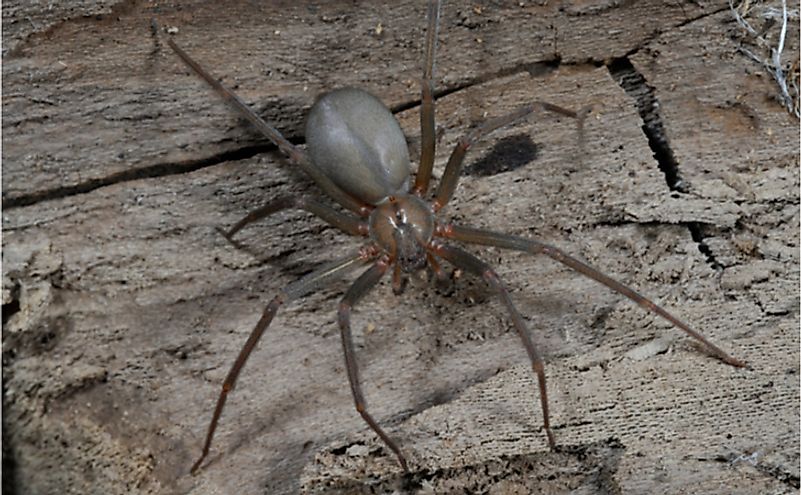Where Do Brown Recluse Spiders Live?

The brown recluse spider is a type of recluse spider with a range that is limited to the Midwestern and South Central United States. The species has necrotic venom and its bite, like other brown spiders, requires immediate medical attention. The brown recluse is one of three species of spiders in North America with medically significant venom, the others being the Chilean recluse and the black widow. Although usually light or medium brown, the color of the brown recluse spider can also be whitish, dark brown, or blackish gray.
Distribution
The brown recluse spider is found throughout the Midwestern and South Central United States. Other species of brown spiders also inhabit these regions, but the brown recluse is the most common. They are rarely seen outside of their native habitat and are less common than previously believed. Occasionally, a small number of individuals may be transported to non-native areas, but infestations rarely become established. The brown recluse is distinguished from other brown spiders by the dark violin-shaped mark on its abdomen. It is critical to learn and understand the physical appearance of the brown recluse since many people mistake other spiders for the deadly species.
Habitat And Behavior
In its natural environment, the brown recluse spider prefers living outdoors under rocks, woodpiles, debris, and logs. It has also adapted to living indoors alongside humans. The spider is resilient enough to withstand extreme temperatures during summer and winter and can survive for long periods without food or water. The brown recluse is nocturnal and actively hunts at night, preying on both living and dead insects. The species does not use webs or suspend from walls and ceilings to capture food but instead crawls into tight spaces in search of prey. During the day, the spider retreats to dark, secluded areas away from predators and human disturbance. As solitary a spider, the brown recluse retreats to the same spot until it is invaded or destroyed. Female spiders remain close to their retreat, while males and older juveniles are more mobile, and will travel farther in search of food and territory. As a result, they are more likely to wander into bedding, clothing, and shoes and are likely to bite when trapped. On rare occasions, they may be observed during the day crawling on walls and exposed surfaces. Such behavior is typically triggered by intolerable conditions such as overcrowding, hunger, and pesticide application. Female recluse spiders lay an egg sac that usually contains between 40 and 50 eggs. Tiny spiders hatch and molt 5 to 8 times before reaching adulthood. They reach maturity after 12 months and have a lifespan of between two and four years. Female brown recluse spiders can produce 4 to 5 egg sacs in a lifetime and can live in the same habitat throughout its lifespan. Infestation levels range from a few spiders to several thousand.
Bite Treatment
Treating the bite of the brown recluse spider involves first aid and immediate medical care. If possible, the spider should be captured and transferred with the patient for identification. Treatment includes immobilizing the affected limb, local wound care, and a tetanus injection. Several therapies have been used with varying degrees of success. Most people living in infested areas have learned to treat the bites without visiting the hospital.
Do you know what is the largest spider in the world? Click here for an answer.
Also, learn about the deadliest spiders in the world in this article.











